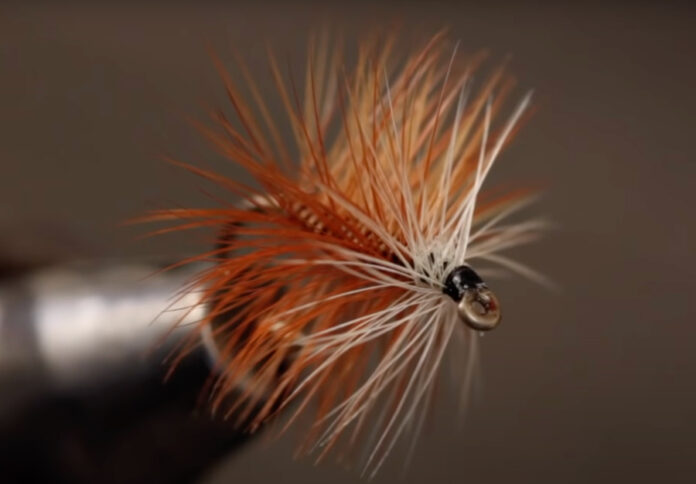The Bivisible is one of those time-tested patterns that you’ll still find in many anglers’ boxes today. Although no one knows for certain who first wrapped these contrasting hackles on a hook together, this particular pattern is most often attributed to Edward Ringwood Hewitt. In his 1926 book Telling on the Trout, he wrote:
Dark colors are more visible to the trout from below than light colors, and, therefore, take more fish under most conditions and are more generally used. They are often, however, more difficult to see on the water than the lighter flies. This is the reason for my favorite design of fly which I call the Bi-Visible which consists of a palmer-tied brown hackle on the head of which is wound a small wisp of white hackle. The white resting against the brown becomes very visible in most lights to the angler; on the other hand, the trout see the brown hackle from below better than any other color used. This fly is by far the best of any I have yet seen for all species of trout and it is based on a sound physical principle.
It’s hard to argue with Hewitt’s logic, as the fly has been producing fish for almost 100 years.
In this great video from Tightline Productions, Tim Flagler shows just how easy it is to tie this fly, which has just four materials. But the real value here is in the masterclass on hackles that Flagler offers at the beginning. The tips on choosing, preparing, and wrapping hackles will make all your flies look and perform better.
Bivisible
Hook: 1X-long dry fly hook (here a Dai-Riki #300), sizes 10-18.
Thread 1: Black, 6/0 or 140-denier.
Hackle 1: Brown hackle.
Hackle 2: White Hackle.
Head: Tying thread.
Adhesive: Head cement.
Tools: Hackle gauge.
Credit: Source link































